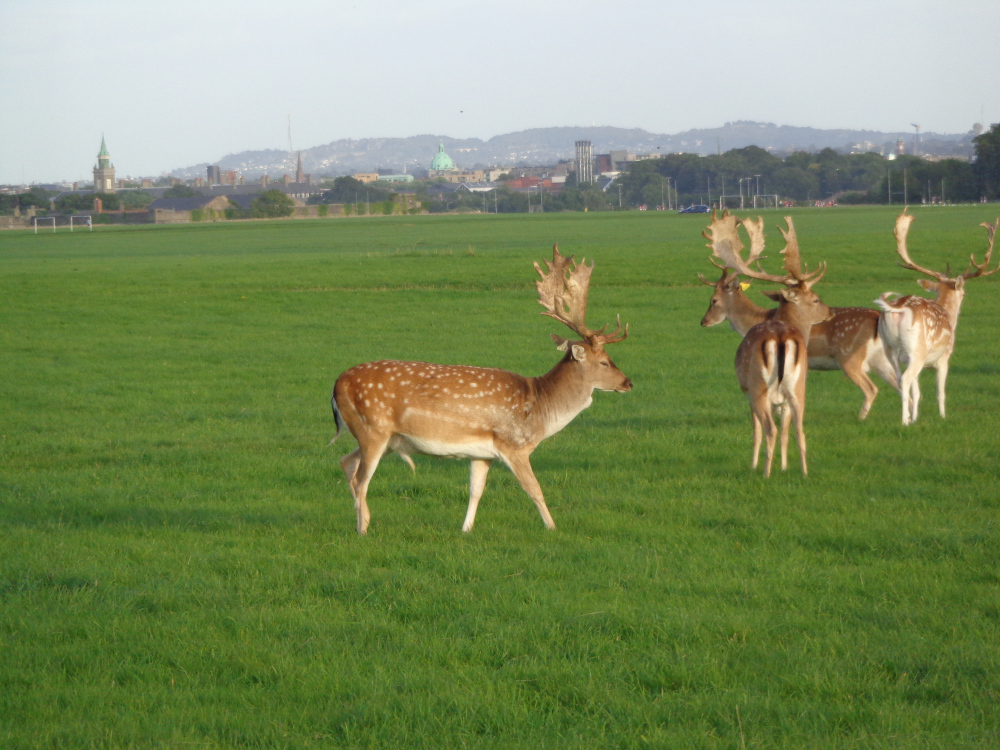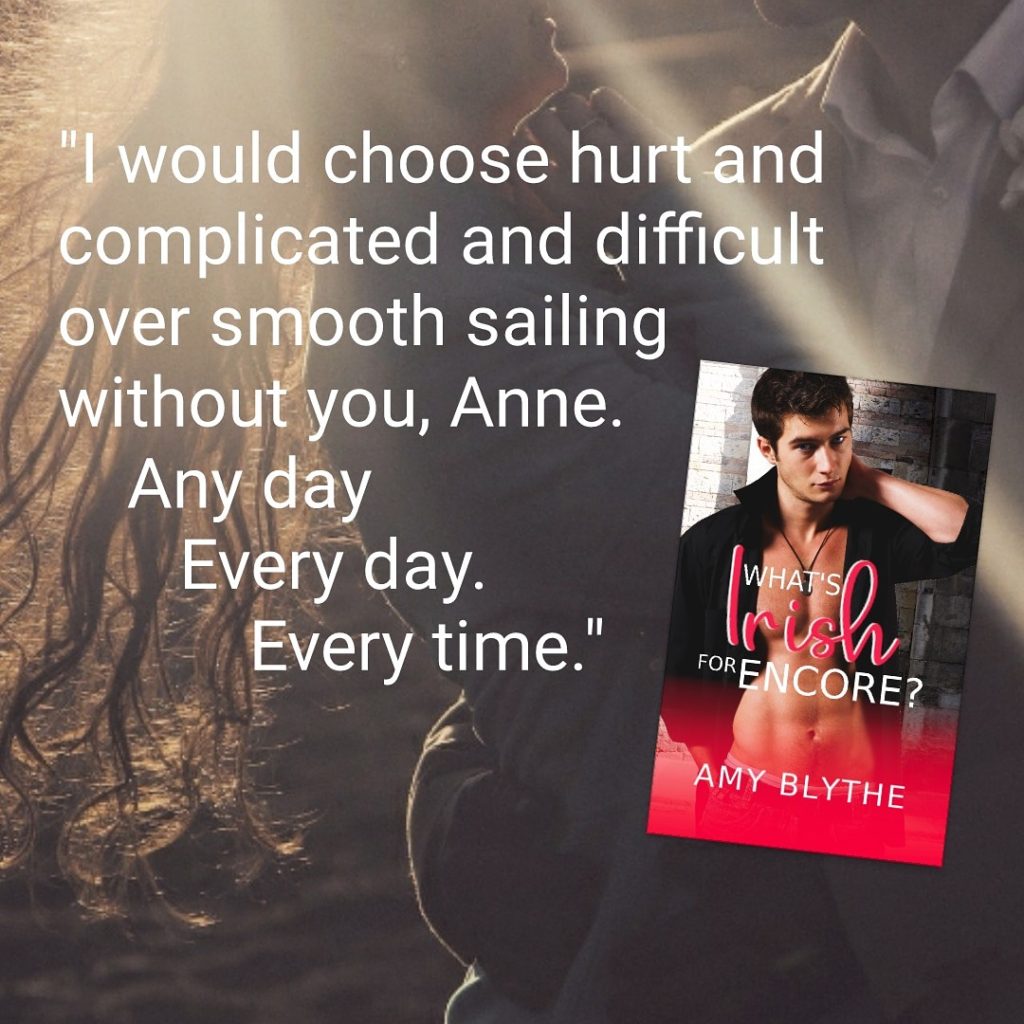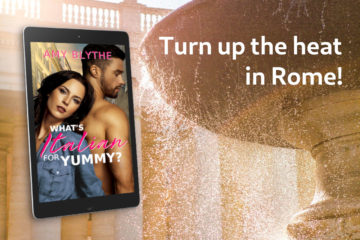All Things Irish
What’s Irish for Encore? kicks off when Anne Reynolds confesses her greatest sin to a priest… who turns out to be the first boy she ever fell in love with, 20-odd years ago. So, I thought I’d start with a couple of confessions, and we’ll go from there!
Confession #1: I’d written more than ten stand-alone novels before I linked any of them together in series.
And I’m loving it—weaving all these stories together. Some of these characters existed already, had whole manuscripts devoted to them outside of the series, and I’ve made a few tweaks (or relocated them entirely) to include them in the world of Have Heart, Will Travel. Is that a confession within a confession?

Confession #2: I’ve only written books set in countries I’ve actually visited… until now.
We spent 3 years in Paris, so it was pretty straight-forward to bring What’s French for Oops? to life. London was a bit more tricky, as I’ve only visited briefly. I haven’t spent much more time in Amsterdam, truth be told, but we did lots of visits to other parts of the Netherlands. And I married a Dutchman, so he’s generally on hand to help with the language and details. I was confident I could get the setting and language right in What’s Dutch for Damn?.
But I’ve never visited Ireland. I don’t have convenient family who can fill in the gaps. In the first chapter of What’s Irish for Encore?, Kate says to Anne, “Everything I know about Ireland I learned in a Marian Keyes novel.” And I’ll be honest, I can add to that a chunk of 90’s television and a few Maeve Binchy books… so I’m a fraud. Setting a book in Dublin was always going to pose a challenge.
And don’t even get me started on the Irish language. I knew ‘craic’ and ‘grand’ and ‘gobshite’. And that was about it. Just to confirm that I’m even more of a dork than suspected, I actually did once try to learn Irish Gaelic, during a brief obsession with the Emerald Isle when I was 14 years old. I didn’t get very far. And from that foray, I remember not a single thing.

Good thing I quite enjoy research. I wandered Dublin on Street View and looked at numerous blogs about the Top Ten Undiscovered Things to do in Dublin. I browsed old Dublin Theatre Festival programs and twisted my tongue around lengthy lists of delicious Irish phrases.
And, thankfully, I found an Irish beta reader – essential! My colleague, who teaches Spanish, comes from Ireland, and likes reading romance novels, and did me a SOLID. Saved me from one particular spectacular oopsy-daisy. SPECTACULAR. Let me tell you.
She also assured me it feels very Irish. Transported her to Dublin from the very first chapter.

I made the poor woman even more homesick than she already was, and she can’t travel home to visit her family because the world is falling apart at the seams, more than a wee bit. Sorry, Laura. But thank you!
I will tell you about the terrible mistake she saved me from—it’s in the list…
Yes, there’s a list. I am a list-maker. Lusty for lists. Listacular!
I give you 10 delightful Irish things I discovered while writing What’s Irish for Encore?…
1. Enormous deer live in the middle of Dublin. I grew up in a city with a working farm right in the middle, so I wasn’t flummoxed by the prospect of a giant park, smack bang in the middle of a metropolis, including farm animals. I have vivid memories of coming across a dead lamb while walking up the side of Maungakiekie – gave me a proper fright. And one time, Dad came across a bull in a paddock – backed away, very slowly, and leapt over the sty, having a small coronary. But cows and sheep have nothing on these guys…

Phoenix park has other sights to see: monuments and barracks and a massive white “Papal Cross” that dominates the landscape, but I wouldn’t have put this park on this list (or even in the book, probably) if it weren’t for these guys.

In the immortal words of Ricky Baker: It’s majestical.
2. Banjaxed. This delightful word isn’t entirely unfamiliar to me, but I’ll be using it more and more now that I’ve looked it up properly. See also, Gammy and ‘Make a bags of it.’
3. Ar scáth a chéile a mhaireann na daoine. I love this saying. It means, under the shelter of one another, we survive. This idea comes up a few times in What’s Irish for Encore? and could almost be named as a theme of the story – the value of real community.
4. St Brigid’s Cross. We made something similar out of the tī kōuka (cabbage tree) leaves in our garden last Easter. It was during lockdown, and church was online—a wee collection of things to read and watch and do… and one of them was weaving harakeke (flax) into little crosses.
We made a few, and every single one ended up as a fire-starter over the winter. I didn’t give them another thought until I was trying to decide what Ciaran would have tacked up on his kitchen wall. Something that might make him feel a little inadequate. Something his friend might fixate on when he’s angry.

That’s when I discovered the St Brigid’s cross. These woven crosses are named for a Catholic saint – a saint with a LOT of stories about her. She’s all over the show, truly. Healing mute girls with the touch of her blood (from a handy head wound) and giving away all her mother’s butter (rude!) but replacing it by praying (so very handy).
Born into slavery, Brigid of Kildare was bought and sold by her own father a couple of times, and when hassled for deciding men were of no interest to her (gee, wonder why) she told the fella his eyes would burst. She didn’t lay a finger on the him, but God must have agreed with her judgement. Pop!
The St Brigid’s Cross is a fairly simple craft project, usually on the last day of January, in preparation for St Brigid’s feast day. Placing this cross in your rafters is said to protect you – as well as your livestock. She had an affinity for animals. Apparently her touch could increase a cow’s milk production. Another story says she could turn water into beer. Pure handy!
If you want to try making a St Brigid’s cross, here are the instructions…
If you’re using flax or cabbage tree leaves, I’d recommend tearing each leaf into a few smaller reed-like pieces. Use green leaves or soak fallen cabbage tree leaves. And for harakeke, in New Zealand, make sure you follow tikanga before harvesting flax.
5. Yiz. This is that very useful pronoun we seem to have gone without in ‘proper’ English: the plural of YOU. I do wonder how many of our problems, historically, cross-culturally, inter-personally, get more complicated by confusing who exactly is included in our pronouns.
I’ve been tapping away at learning Te Reo Maori these last few years and I have to say that THIS is a language I can get behind – all bases covered!
Koe = just the person I’m talking to, singular ‘you’
Korua = just the two of you
Koutou = all of you, the people I’m talking to
Tāua = you and me, and no one else – ‘we’
Tātou = all of us, you and me and those people over there even – a broader ‘we’
Māua – me and this one person, not you – exclusive 2-person ‘we’
Mātou – me and these people, but not you – exclusive but broad ‘we’
Ia – the singular they, ungendered. Just like they in English, in fact! Example: who left their shoes in the corridor? They should put them away before someone falls and breaks their ankle.
Rāua – those two people, but not you and not me
Rātou – all those people, but not you and not me. The other they in English. The one people don’t get all het up over.
In New Zealand, it’s fairly common to hear the word ‘yous’ to refer to a group of people – 2nd person plural. This only clicked for me recently because if you start with Maori, ‘yous’ fills that gap in the English language.
The Irish have their own solution, for which I cannot give you a thorough list of pronouns and a short history… but I can give you the word: Yiz.
6. Language is a ride! Writing a book is quite a ride! Yes, ‘Ride’ was the almost-disaster my linguist colleague spared me from. Ciaran, our hero in What’s Irish for Encore?, is a cyclist. He’s often on a bike… often going for a ride. But in Irish, a ride is sex. And Ciaran’s a Catholic priest, so being overly-casual about a ride isn’t going to work here.

One of the later edits I did of this book was a quick Ctrl+F for the word ‘ride’. If it feels, when you’re reading, like I’m overusing the word ‘cycle’ or ‘bike’, that’s why. I was backing out of a helluva faux pas.
I mean, don’t get me wrong, I had some fun with it, too. Anne, our leading lady, is not Irish. She uses ride to mean going somewhere in a vehicle, and, on occasion, she stumbles into a conversation with a whole nother meaning.
I make no apologies for my love of a good double entendre.
And, to my endless delight it goes both ways. Apparently, in Ireland, ‘eating the head off of‘ a person is NOT about sex. It just means to verbally abuse someone. If you get a telling off for parking over the lines – your mouthy assailant has eaten your head off (perhaps rightly so).
Go ahead. Have a giggle.
Gabhal is another good ‘un. This is pronounced like ‘gall’ and has several different meanings – some obviously related, others not so much. I’m used to gall meaning over-stepping or being presumptuous. The Irish use ‘gall’ for a foreigner. Gaul was the region the Celts once occupied, covering much of Western Europe–perhaps that’s why. But Gabhal also means a fork in a road, a gap or junction… and of course, a crotch.
7. Let’s talk weather. The Irish do have a reputation to uphold, after all. Aimliú is a lovely word. Not only does it sound delicious, but it has a beautifully melancholy meaning and seems so very Irish: left out in the weather to be ruined. Aiteall is another gorgeous weather word – a fine spell between two lots of rain.

8. Beyond words! I quite like words that simply don’t have an English equivalent. Aduantes is a good example of this. It means the feeling of being a foreigner, outsider, a bit lost, and just generally not belonging. Fish out of water.
Another breed of words I’ve come to adore are those that we use in English but they don’t mean the same thing at all in their original language. In France I discovered ‘ensuite’ doesn’t mean handy little bathroom attached to bedroom, but in fact means ‘next’ – most commonly seen on TV to tell us what will be on after the show we’re watching.
In Irish, bogán doesn’t mean someone in an AC/DC tshirt with a can of Jim Beam and strong opinions about cars. In fact, my research tells me this is a uniquely Australasian understanding of the word bogan. For the Irish, bogán means an egg with no shell – a softy. A push-over, unreliable, even spineless. A bogán will flake out on you. A bogan, on the other hand, will introduce you to some excellent music and leave a little tire rubber in your cul-de-sac.
9. Can you smell it? One of the challenges of writing an unfamiliar setting is the stuff I cannot glean from pictures and videos and books.
What does Dublin smell like? Depends where you are, of course. Most of the story takes place right in the middle of the city, near the river and the brewery. I made sure to avoid Moore Street and its fish stink. The Liffey has a bit of a reputation, historically, but these days Dublin doesn’t stink to high heaven on the regular. Just a normal amount of city pollution, algae and just a tad… shitty. Avoid at low tide if you’ve a sensitive nose. The hops from the Guinness factory are a potent scent in that neighborhood.
If there’s a sea breeze, gulp down salt spray, that tangy bitter scent. I love that smell – perhaps because I grew up in a harbor city, though on the other side of the globe. If the breeze comes from the mountains, breathe deep the mossy, woody heather, and moor-grass, bright and sour and a little loamy, and since we’re in Ireland, the rain.

10. What’s Irish for Encore? I wouldn’t leave you wondering. I mean, the answer is in the book, and I’d definitely recommend reading it, but just in case you don’t, without further ado…
Athghairm is the word. It can be used in a theater context – give us another song, another bow! – but beyond that athghairm also means a recall, a do-over, as well as being the word for a repeal. What’s Irish for Encore? opens toward the end of 2016, and at that time Ireland was making a few major reforms.
Ciaran’s a progressive priest in that environment, so finding this word was a truly magical moment for me, as a writer. I’d already written the book, but the title was evading me. Encore covers so many elements of the story – Anne is an actor on the stage (encore!), Ciaran’s in trouble with his superiors for his stance on the repeal (athghairm), and What’s Irish for Encore? is, at its heart, a second-chance love story.

There you have it! A listicle for Ireland. I’m obviously no expert on the subject, but I thoroughly enjoyed living in Dublin, in my head at least, while I wrote and rewrote this book.
And I hope you will, too. While we cannot really travel, not safely, not for the forseeable, books are a brilliant (and very cost-effective) alternative. I keep wanting to write ‘bon voyage’ in signed copies.
It is my greatest wish, as a writer, to be able to transport my readers to another time and place. A safe trip, guaranteed. A happy ending, too.



